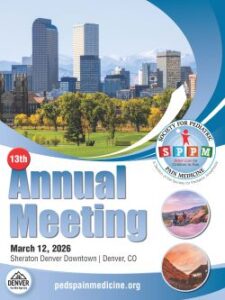 The American Society of Hematology non-opioid pharmacologic guidelines for Sickle Cell Disease acute pain management now recommends the use of regional anesthesia for select adult and pediatric patients with focal vaso-occlusive crisis. Regional anesthesia with peripheral nerve blockade is beneficial for this population as it:
The American Society of Hematology non-opioid pharmacologic guidelines for Sickle Cell Disease acute pain management now recommends the use of regional anesthesia for select adult and pediatric patients with focal vaso-occlusive crisis. Regional anesthesia with peripheral nerve blockade is beneficial for this population as it:
Correct!
Wrong!
Question of the Month - September 2021
Correct answer: (C) Improves local vasodilation and oxygen delivery
Pharmacotherapy for Sickle Cell Disease vaso-occlusive crisis targets peripheral and central nociceptive and inflammatory-mediated pathways. The 2020 American Society of Hematology (ASH) guidelines for the management of acute and chronic pain in Sickle Cell Disease (SCD) provided updated recommendations for multimodal treatment modalities with the introduction of regional anesthesia to this pathway. Regional anesthesia blunts autonomic nociception and the inflammatory response for surgical stimulants, while promoting local vasodilation to improve tissue oxygenation. These characteristics are beneficial for SCD patients with vaso-occlusive crisis (VOC). Two pediatric prospective observational reports demonstrated decreased opioid consumption, improved oxygenation and activity rehabilitation following the thoracic epidural analgesia for severe sickle cell mediated acute chest syndrome. However, there is no literature replicating this with peripheral nerve blockade and SCD-VOC. The up-regulation of interleukins (ILs), cytokines and endothelial adhesion molecules details the pathophysiology of the microvascular occlusion characteristic of VOC. Furthermore, there are no regional anesthesia studies investigating the up-regulation or down-regulation of inflammatory markers specific to SCD-VOC. Albeit, several surgical case reports have demonstrated the reduction in the inflammatory response following regional anesthesia; suggesting this effect may be seen in patients with SCD-VOC after receiving regional anesthesia as well. Further investigation into the pathophysiology of regional anesthesia for SCD-VOC is prudent.
References:
1. Tighe PJ, Elliott CE, Lucas SD, et al. Noninvasive tissue oxygen saturation determined by near-infrared spectroscopy following peripheral nerve block. Acta Anaesthesiol Scand 2011:55(10):1239-1246.
2. Weber G, Liao S, Burns MA. Sciatic (Popliteal Fossa) Catheter for Pediatric Pain Management of Sickle Cell Crisis: A Case Report. A A Case Rep 2017:9(10):297-299.
3. Wyatt KE, Pranav H, Henry T, et al. Pericapsular nerve group blockade for sickle cell disease vaso-occlusive crisis. J Clin Anesth 2020:66:109932.
4. Yaster M, Tobin JR, Billett C, et al. Epidural analgesia in the management of severe vaso-occlusive sickle cell crisis. Pediatrics 1994:93(2):310-315.
5. New T, Venable C, Fraser L, et al. Management of refractory pain in hospitalized adolescents with sickle cell disease: changing from intravenous opioids to continuous infusion epidural analgesia. Journal of pediatric hematology/oncology 2014:36(6):e398-402.
6. Brandow AM, Carroll CP, Creary S, et al. American Society of Hematology 2020 guidelines for sickle cell disease: management of acute and chronic pain. Blood Adv 2020:4(12):2656-2701.
7. Wyatt KE, Liu CJ. Regional Anesthesia for Sickle Cell Disease Vaso-occlusive Crisis. SPPM Newsletter Fall 2020.
Pharmacotherapy for Sickle Cell Disease vaso-occlusive crisis targets peripheral and central nociceptive and inflammatory-mediated pathways. The 2020 American Society of Hematology (ASH) guidelines for the management of acute and chronic pain in Sickle Cell Disease (SCD) provided updated recommendations for multimodal treatment modalities with the introduction of regional anesthesia to this pathway. Regional anesthesia blunts autonomic nociception and the inflammatory response for surgical stimulants, while promoting local vasodilation to improve tissue oxygenation. These characteristics are beneficial for SCD patients with vaso-occlusive crisis (VOC). Two pediatric prospective observational reports demonstrated decreased opioid consumption, improved oxygenation and activity rehabilitation following the thoracic epidural analgesia for severe sickle cell mediated acute chest syndrome. However, there is no literature replicating this with peripheral nerve blockade and SCD-VOC. The up-regulation of interleukins (ILs), cytokines and endothelial adhesion molecules details the pathophysiology of the microvascular occlusion characteristic of VOC. Furthermore, there are no regional anesthesia studies investigating the up-regulation or down-regulation of inflammatory markers specific to SCD-VOC. Albeit, several surgical case reports have demonstrated the reduction in the inflammatory response following regional anesthesia; suggesting this effect may be seen in patients with SCD-VOC after receiving regional anesthesia as well. Further investigation into the pathophysiology of regional anesthesia for SCD-VOC is prudent.
References:
1. Tighe PJ, Elliott CE, Lucas SD, et al. Noninvasive tissue oxygen saturation determined by near-infrared spectroscopy following peripheral nerve block. Acta Anaesthesiol Scand 2011:55(10):1239-1246.
2. Weber G, Liao S, Burns MA. Sciatic (Popliteal Fossa) Catheter for Pediatric Pain Management of Sickle Cell Crisis: A Case Report. A A Case Rep 2017:9(10):297-299.
3. Wyatt KE, Pranav H, Henry T, et al. Pericapsular nerve group blockade for sickle cell disease vaso-occlusive crisis. J Clin Anesth 2020:66:109932.
4. Yaster M, Tobin JR, Billett C, et al. Epidural analgesia in the management of severe vaso-occlusive sickle cell crisis. Pediatrics 1994:93(2):310-315.
5. New T, Venable C, Fraser L, et al. Management of refractory pain in hospitalized adolescents with sickle cell disease: changing from intravenous opioids to continuous infusion epidural analgesia. Journal of pediatric hematology/oncology 2014:36(6):e398-402.
6. Brandow AM, Carroll CP, Creary S, et al. American Society of Hematology 2020 guidelines for sickle cell disease: management of acute and chronic pain. Blood Adv 2020:4(12):2656-2701.
7. Wyatt KE, Liu CJ. Regional Anesthesia for Sickle Cell Disease Vaso-occlusive Crisis. SPPM Newsletter Fall 2020.
 SPPM 13th Annual Meeting
SPPM 13th Annual Meeting